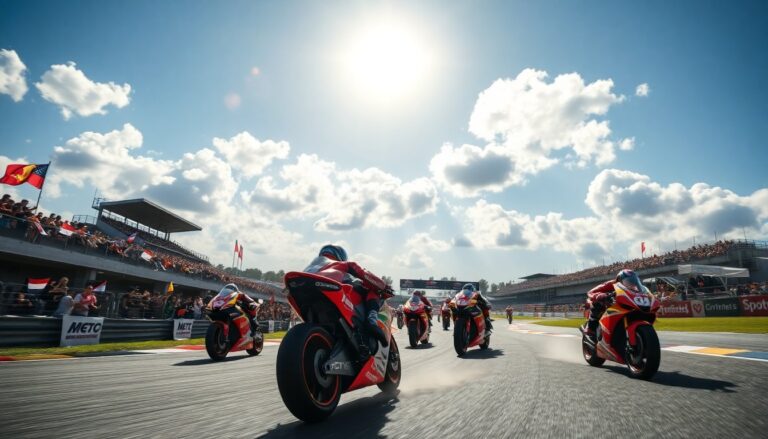Argomenti trattati
The world of motoGP is a dynamic blend of speed, skill, and strategy, engaging millions of fans worldwide. Recognized as the pinnacle of motorcycle road racing, it showcases the fastest bikes and the most skilled riders. MotoGP boasts a rich history and a dedicated fan base, with a unique culture that sets it apart from other motorsport events. This article delves into the intricacies of motoGP, its evolution, and the factors that make it compelling for both participants and spectators.
History and evolution of motoGP
The origins of motoGP date back to the early 20th century, with the inaugural official race occurring in 1949. Originally named the World Championship Grand Prix, the series has undergone significant evolution over the decades. Technological advancements and regulatory changes have transformed the sport, resulting in faster bikes and more competitive races.
In 2002, the championship was rebranded as motoGP, further boosting its popularity. A key change occurred in 2007 with the introduction of 800cc motorcycles, escalating performance and excitement. However, this shift was temporary, as regulations reverted to 1000cc engines in 2012, reviving the race for speed and dominance on the track.
Key figures in motoGP history
Many legendary riders have made a lasting impact on motoGP throughout its history. Icons such as Valentino Rossi, Giacomo Agostini, and Marc Márquez have not only excelled on the track but also won the hearts of fans. Valentino Rossi, often celebrated as the greatest of all time, boasts a career spanning over two decades, with multiple world championships.
Riders like Márquez, recognized for his aggressive riding style and exceptional talent, have redefined the limits of what is achievable in motoGP. Their rivalries and performances create compelling narratives that heighten the excitement of each season, keeping fans eagerly engaged.
The technology behind motoGP
Central to the allure of motoGP is the cutting-edge technology that powers the bikes. Manufacturers such as Yamaha, Honda, and Ducati invest heavily in research and development to secure a competitive advantage. The engine technology, suspension systems, and aerodynamics are continuously refined to optimize performance.
A significant advancement in recent years is the integration of electronic systems. These systems assist riders in managing power delivery, traction control, and braking, enabling them to navigate challenging circuits more effectively. The use of data analytics also plays a crucial role, as teams analyze telemetry data to inform decisions about tire choices and setup adjustments.
Challenges faced by motoGP riders
Despite the exhilarating nature of racing, the life of a motoGP rider is filled with challenges. The physical and mental demands are substantial. Riders must maintain peak physical fitness, as they endure extreme forces while racing. Injuries are common, and the inherent risks of high speeds and intense competition are significant.
Moreover, the mental aspect of racing is vital. Riders must cultivate a sharp sense of strategy and situational awareness to outmaneuver their competitors. The pressure to perform consistently can lead to stress and anxiety, making mental resilience essential for a successful career in motoGP.
The global impact of motoGP
The influence of motoGP extends beyond the racetrack. It fosters a sense of community among fans and promotes motorcycle culture globally. The series has a considerable economic impact, attracting millions of spectators to races and generating revenue for host cities. Additionally, the sport’s safety protocols and technological innovations have shaped motorcycle safety standards worldwide.
The origins of motoGP date back to the early 20th century, with the inaugural official race occurring in 1949. Originally named the World Championship Grand Prix, the series has undergone significant evolution over the decades. Technological advancements and regulatory changes have transformed the sport, resulting in faster bikes and more competitive races.0

